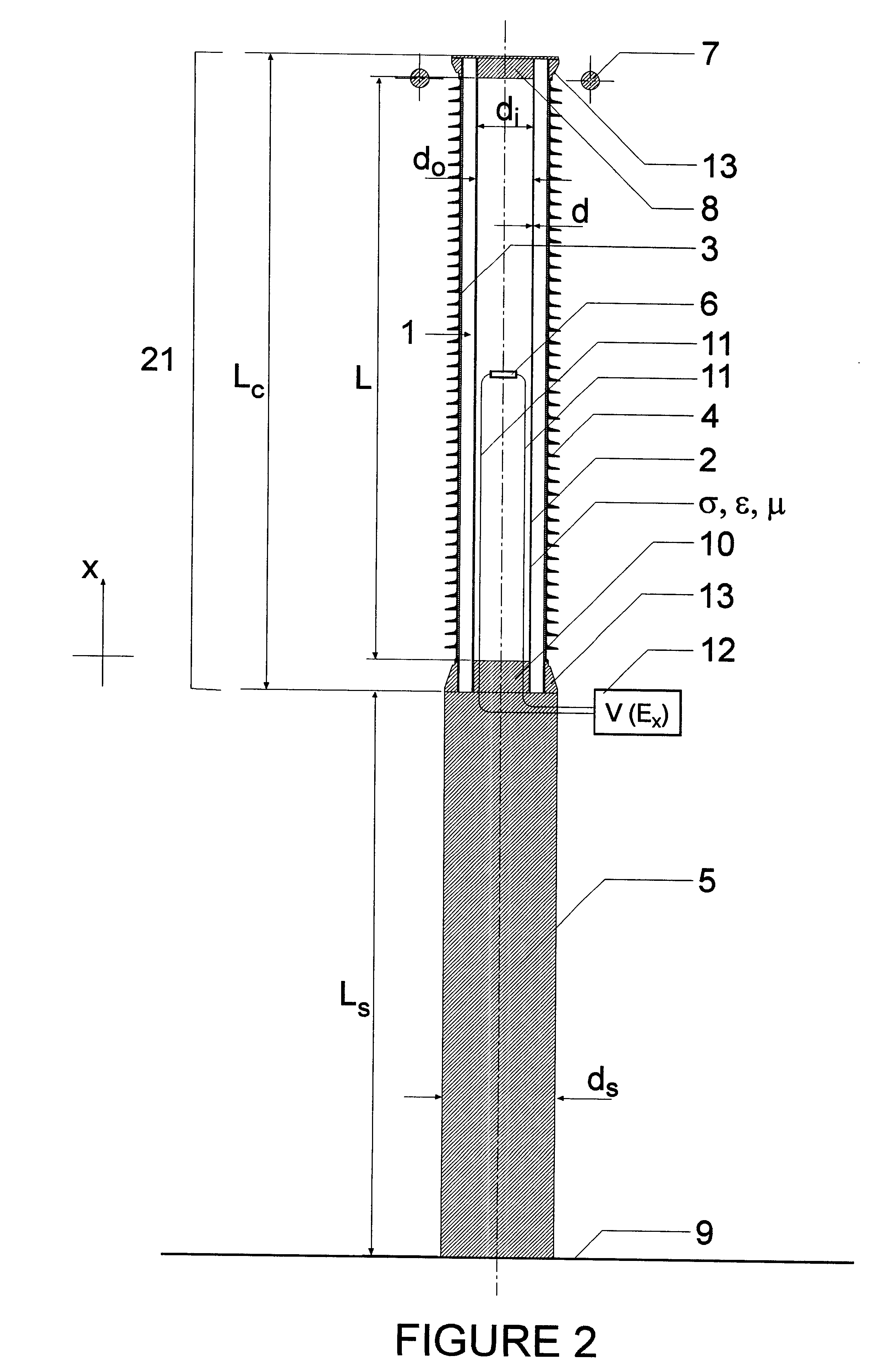Voltage sensor
a voltage sensor and voltage sensor technology, applied in the field of voltage sensors, can solve the problems of large equipment cost, large equipment cost, and large equipment maintenance costs, and achieve the effect of significantly reducing deficiencies
- Summary
- Abstract
- Description
- Claims
- Application Information
AI Technical Summary
Benefits of technology
Problems solved by technology
Method used
Image
Examples
Embodiment Construction
EFSVT Test Simulations
In the following example, the performance of an EFSVT standoff (particularly the isolating-section 2 of the standoff 21) is described and evaluated by simulation. The EFSVT structure is shown in FIG. 2.
The particular standoff to be analyzed has a height L.sub.c =2245 mm and is supported on a grounded stand with height L.sub.s =2 m and diameter d.sub.s =400 mm. Also, it has a corona ring with inner diameter 539 mm and outer diameter 671 mm at the base of the top electrode. There are 45 rubber sheds; an outer fiberglass tube with inner diameter 300 mm and outer diameter 312 mm; an inner isolating-section 2, a tube with inner diameter d.sub.i =198 mm and outer diameter d.sub.o =206 mm; and an electrode-to-electrode spacing L=2070 mm. Here, various EFSVT examples are given having different inner tube resistances of infinity, 10.sup.12, 10.sup.9, 10.sup.8, 5.times.10.sup.7, and 10.sup.6.OMEGA.. The relative permittivities of the inner and outer tubes are 5 and the r...
PUM
 Login to View More
Login to View More Abstract
Description
Claims
Application Information
 Login to View More
Login to View More - R&D
- Intellectual Property
- Life Sciences
- Materials
- Tech Scout
- Unparalleled Data Quality
- Higher Quality Content
- 60% Fewer Hallucinations
Browse by: Latest US Patents, China's latest patents, Technical Efficacy Thesaurus, Application Domain, Technology Topic, Popular Technical Reports.
© 2025 PatSnap. All rights reserved.Legal|Privacy policy|Modern Slavery Act Transparency Statement|Sitemap|About US| Contact US: help@patsnap.com



